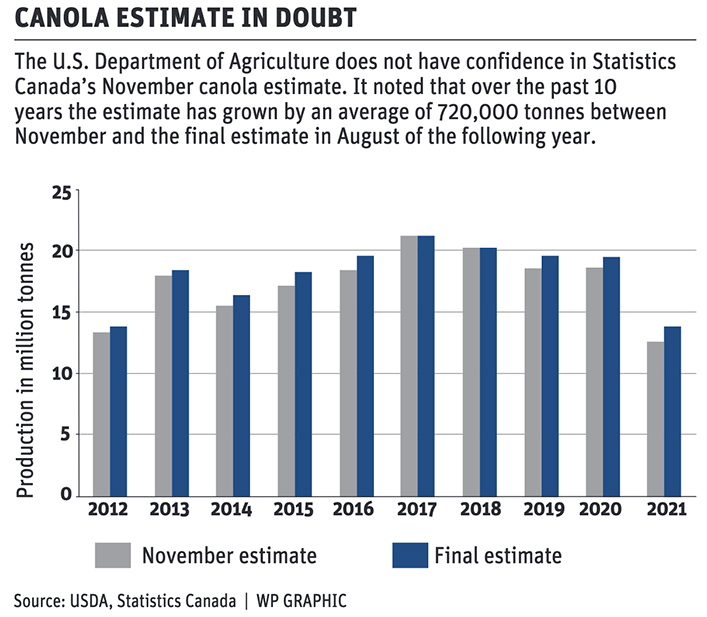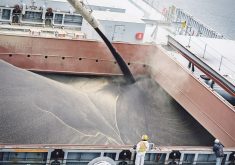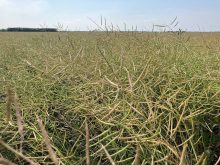American department’s move to cast doubt on Statistics Canada’s production estimates called ‘highly unusual’
The U.S. Department of Agriculture has little faith in Statistics Canada’s November canola production estimate.
Over the past 10 years, that number has grown by an average of 720,000 tonnes between the November estimate and the final estimate in August, according to an analysis published in its World Agricultural Production report.
“This throws a serious amount of shade on Statistics Canada,” said MarketsFarm analyst Bruce Burnett.
“It’s the U.S. government calling out the statistical agency of Canada.”
He said it is “highly unusual” for the USDA to publicly declare they do not believe the numbers coming out of other major production regions of the world.
If the production number eventually goes up by 720,000 tonnes, it will largely negate the recent 900,000 tonne reduction contained in Statistics Canada’s November estimate.
That decrease immediately sparked a $35 per tonne rally in nearby canola futures prices.
The USDA noted that the canola production estimate has gone up in eight of the past 10 years. The other two years it stayed at the same level as the August forecast.
MarketsFarm analyst Bruce Burnett said it is hard to argue with the data, but his gut tells him the final number likely won’t jump by 720,000 tonnes this time around.
He was in lockstep with StatsCan’s recent 900,000 tonne drop.
“A lot of producers I was talking to were disappointed with their canola yields this year from the main growing areas,” he said.
“Farmers got a good, solid, average to above-average yield in those areas, but they were expecting something a lot better.”
Even if the production number does climb in subsequent reports, he doesn’t think it will have much of an impact on prices.
That is because global canola and vegetable oil demand is strong and exports would likely absorb any future increase in production, although he acknowledged that Canada would face stiff competition from Australia’s monster crop.

However, it appears that Canada’s other big competitor may be exiting the market. APK-Inform reports that Ukraine has already shipped 2.9 million tonnes of the crop, which is slightly above the USDA’s 2022-23 export forecast of 2.8 million tonnes.
Canada’s exports are forecast at anywhere from six to 9.3 million tonnes, depending on the analyst.
A lot of the uncertainty has to do with the difficulties pinning down the production number.
Statistics Canada’s latest forecast is 18.2 million tonnes. That estimate comes from a survey of 27,200 farmers. All its previous estimates were based off satellite images of vegetative growth, with the last one predicting 19.1 million tonnes.
Burnett thinks the survey is a better reflection of reality this year.
He has confidence in the satellite-based approach, but this year the images of lush vegetative growth didn’t translate into yields due to underlying issues such as disease or pod-filling problems.
“My personal feeling is that post-harvest, we should probably have two surveys so that they can monitor the trends between two surveys,” he said.


















